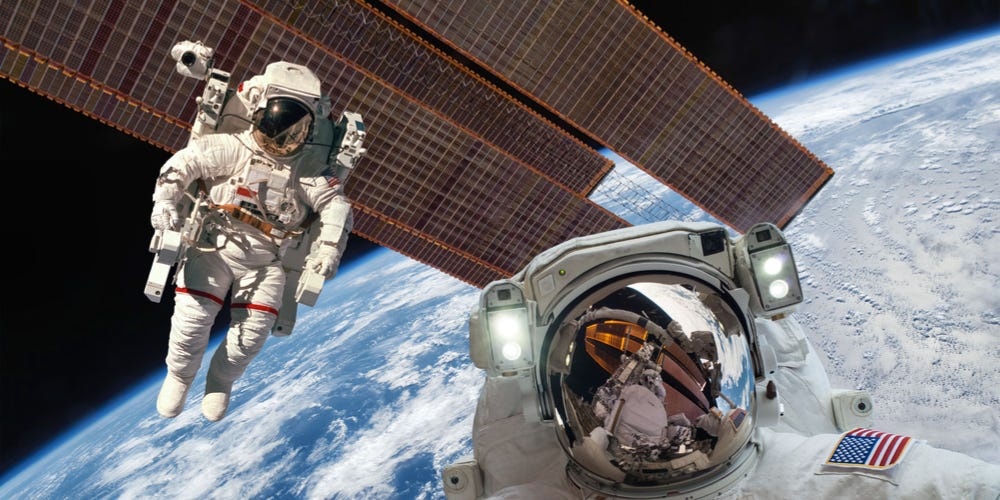
Towering behind him, bathed in lights, was the latest prototype, about 120 meters tall: the Starship vehicle, which carries people or payloads, resting on top of a Super Heavy booster.
#Spaceship in space update
On a balmy night in February, Musk strode onto a stage in Boca Chica, Texas, home of SpaceX’s Starbase launch site, for a public update on the status of Starship. “And all the NASA centers should be thinking really carefully.” “The writing is on the wall,” Handmer says. If the NASA centers don’t find ways to take risks and make more stuff more cheaply, he says, they will find themselves displaced by companies willing to do so.
#Spaceship in space series
In a series of provocative blog posts with titles like “Starship is still not understood,” he has argued that Starship will upset the traditional way of doing space science-spending billions of dollars to make one-of-a-kind instruments that work perfectly.

#Spaceship in space software
So do NASA centers such as the Jet Propulsion Laboratory, which designs and builds many space science missions, says Casey Handmer, a former JPL software engineer. “We on the science side need to be ready to take advantage of those capabilities when they come online.” But scientists need to prepare, Heldmann says. Also unsettled is whether a market will materialize for a rocket that could put so much into orbit. Even if it is a success, no one knows whether SpaceX will be able to achieve its vision of launching the rockets daily and reusing them many times. All eyes will be on a first orbital launch test, expected sometime in the coming months. Astronomy, planetary science, and Earth observation could all boldly go, better than they ever have before. Space telescopes could grow, and fleets of satellites in low-Earth orbit could become commonplace. On Mars, they could deploy rovers not as one-offs, but in herds. They could fly bigger and heavier instruments more often-and much more cheaply, if SpaceX’s projections of cargo launch costs as low as $10 per kilogram are to be believed. When SpaceX CEO Elon Musk talks up Starship, it’s mostly about human exploration: Set up bases on Mars and make humans a multiplanetary species! Save civilization from extinction! But Heldmann and many others believe the heavy lifter could also radically change the way space scientists work. SpaceX expects to launch the 120-meter-tall Starship on its first orbital test flight in the coming months.

“It’s high-priority science, and it’s also critical for exploration,” Heldmann says. She could also find out where the ice is abundant and pure enough to support human outposts. By analyzing characteristics such as the ice’s isotopic composition and its depth, she could learn about its origin: how much of it came from a bombardment of comets and asteroids billions of years ago versus slow, steady implantation by the solar wind. She dreams of delivering robotic excavators and drills and retrieving ice in freezers onboard Starship, which could return to Earth with tens of tons of cargo. With Starship, Heldmann could send 100 tons to the Moon, more than twice the lunar payload of the Saturn V, the workhorse of the Apollo missions. She has her eye on Starship, a behemoth under development by private rocket company SpaceX that would be the largest flying object the world has ever seen.

Today, Heldmann wants to send another rocket to probe lunar ice-but not on a one-way trip. “That was our first ground truth that there is water ice,” says Jennifer Heldmann, a planetary scientist at NASA’s Ames Research Center who worked on the mission. The Moon, it turned out, wasn’t as bone dry as the Apollo astronauts believed. About 6% of the plume was water, presumably from ice trapped in the shadowed depths of the crater, where the temperature never rises above –173☌.

And it ended minutes later, when a trailing spacecraft flew through and analyzed the lofted plume of debris before it, too, crashed. It began on 9 October 2009, when the hull of a spent Centaur rocket stage smashed into Cabeus crater, near the south pole of the Moon, with the force of about 2 tons of TNT. NASA’s Lunar Crater Observation and Sensing Satellite mission was brutish and short. A version of this story appeared in Science, Vol 377, Issue 6607.


 0 kommentar(er)
0 kommentar(er)
